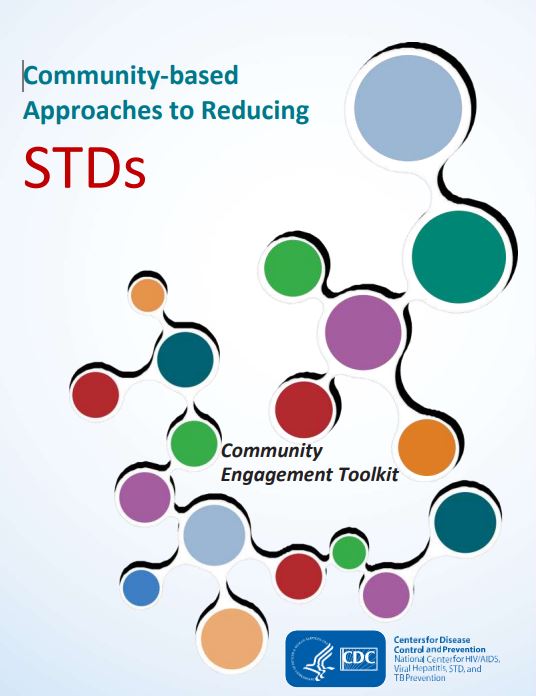Teen Newsletter: Gonorrhea | David J. Sencer CDC Museum | CDC - CDC
Public health problems are diverse and can include infectious diseases, chronic diseases, emergencies, injuries, environmental health problems, as well as other health threats. Regardless of the topic, we take the same systematic, science-based approach to a public health problem by following four general steps.
- Surveillance (What is the problem?). In public health, we identify the problem by using surveillance systems to monitor health events and behaviors occurring among a population.

Reported cases by sex, United States, 2013–2022. Rates increased from 2013 to 2021, and began to decrease between 2021 and 2022
For this section of the newsletter, we are going to dog into an example of public health in action in Baltimore, Maryland.
The Community-based Approaches to Reducing STDs (CARS) initiative mission to address STI rates among adolescents. Before diving into the details of this public health initiative, we need to understand how CDC compiles the STI data that inform public health interventions. The CDC collects nation-level data on gonorrhea rates through the National Notifiable Disease Surveillance System (NNDSS). This data showed that rates of reported gonorrhea increased from 2013 through 2021.
From 2021 to 2022, rates of reported gonorrhea began to decrease. However, there were still 648, 056 total cases of gonorrhea reported in 2022. And, disparities remain in reported STIs among some racial minority or Hispanic ethnicity groups, when compared with rates among non-Hispanic White persons. Furthermore, adolescents are disproportionately affected by STIs. In 2022, half (49.8%) of reported cases of chlamydia, gonorrhea, and syphilis (all stages) were among adolescents and young adults aged 15–24 years.
Many infections go undetected and unreported to CDC. To take this into account, CDC uses rigorous modeling approaches to better understand the vast scope of the STI epidemic and who is most affected. Separate estimates suggest there are approximately 26 million new STIs every year, and almost half of these new infections occur in young people ages 15-24.
- Risk Factor Identification (What is the cause?). After we've identified the problem, the next question is, "What is the cause of the problem?" For example, are there factors that might make certain populations more susceptible to diseases, such as something in the environment or certain behaviors that people are practicing?

Caption: Gonorrhea disproportionately affects those who are between 15 and 24
To address disparities in STI prevention, the Community-based Approaches to Reducing STDs (CARS) initiative was established. During CARS Phase 2 (September 2014-September 2017), the Baltimore City Health Department collaborated with the Johns Hopkins School of Medicine's Center for Child and Community Health Research. The main goal of the effort was to reduce chlamydia and gonorrhea among Baltimore City's young people aged 15-24 in selected areas.
Typically, STI programs have focused on individual-level interventions that can be difficult to sustain without funding. The Baltimore City Health Department engaged community board members and partners on how to best address health disparities and STI prevention. They conducted a root cause analysis with members to help them to identify underlying causes of the prioritized social determinants of health. Young board members identified the following three priority social determinants: lack of sexual health education, lack of sexual health services, and negative culture/perceptions of STI testing.

- Intervention Evaluation (What works?). Once we've identified the risk factors related to the problem, we ask, "What intervention works to address the problem?" We look at what has worked in the past in addressing this same problem and if a proposed intervention makes sense with our affected population.
The CARS initiative uses one of CDC's key strategies: employing community engagement methods to achieve health equity. Health equity is achieved when everyone has an equal chance to be healthy regardless of his or her race/ethnicity, sexual orientation, or social class. Learning more about the individual and social factors that sustain STI epidemics is a vital first step in assisting affected communities to improve their health status. To prevent and control STIs, communities need quality health information and services. Before it was established in Baltimore, the CARS initiative was implemented in Los Angeles, Philadelphia, Richmond, and San Antonio. In this first stage of the CARS initiative, important lessons were learned: to maintain frequent, regular contact with partners and in a timely manner.
- Implementation (How did we do it?). In the last step, we ask, "How can we implement the intervention? Given the resources we have and what we know about the affected population, will this work?"

Picture of an STI kit that Baltimore residents can access through the I Want the Kit program
To address the lack of sexual health services and negative culture of STI testing, the health department worked with Johns Hopkins to develop and implement protocols for expanded community based STI testing and improve the STI testing environment for clients.
Johns Hopkins contracted with the Maryland Institute College of Arts Center for Social Design to assist with the development and design of communication materials to address the negative culture of SI testing. Changes addressed the issues raised by clinic clients: lack of transparency and predictability of the STI testing process, long wait times, and anxiety. The health department also worked with the community-based program, I Want the Kit, to test 461 youth for chlamydia and gonorrhea in the community.
The CARS Program in Baltimore was very successful! Its major strength was its emphasis on recruiting responsible youth to provide meaningful, engaging outreach to their peers to help lower rates of chlamydia and gonorrhea. Between June 2016 and March 2018, the Baltimore County Health Department/CARS program provided: 663 tests for chlamydia, gonorrhea, syphilis, and HIV; 25 outreach trainings for Baltimore communities; and reached 6800+ young adults via CARS educational events.

Comments
Post a Comment